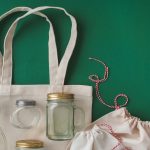Moving from traditional, chemical-intensive household products to more environmentally friendly ones is can be challenging. So here are five tips to help your cleanings become more eco-friendly and economical.
1 – Understand The Pictograms
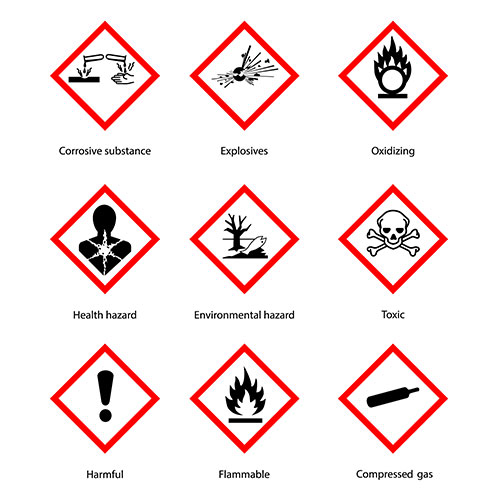
Household products are often made of chemicals that can have health or environmental side effects. Understanding the dangers to which the environment is exposed, as well as which products can affect the health of people or even pets is, therefore, the first step to consider when trying to choose less harmful products.
For this quest, the pictograms on the back of dangerous products are of great help if we know how to read them. The rules on these pictograms have been harmonized by the European CLP regulation, specifically in the 1272/2008 regulation on the classification, labeling, and packaging of chemical substances and mixtures.
The text in this regulation incorporates the United Nations Globally Harmonized System (GHS) and includes nine different pictograms. They can be classified into three main families:
- Physical hazards: products whose physicochemical properties make them flammable, explosive, or corrosive
- Health hazards: especially worrying toxic products;
- Environmental hazards: which concern eco-toxic products.
2 – Discover The Wonders Of White Vinegar
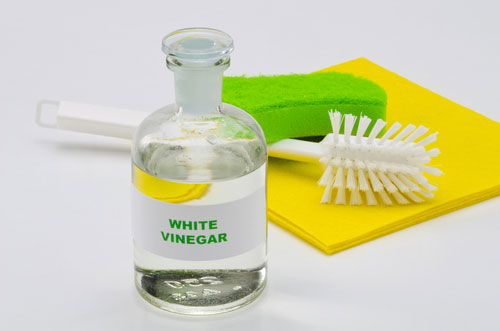
Now that you’re aware of what the pictograms in cleaning products represent, chances are your desire to transition away from toxicity and health issues increased. To smoothly start this change, the easiest way is to become friends with white vinegar – a cheap, accessible liquid with multiple virtues.
One of these virtues is white vinegar’s ability to dissolve limestone. This means it can be used to descale taps, coffee machines, kettles or other household appliances. For kettles in particular, the process is pretty simple: mix water and vinegar (in roughly similar proportions), heat the moisture and wait a few seconds before rinsing it with clean water several times.
Vinegar also has interesting degreasing properties to clean pans or dishes. Let the item or surface you want to clean soak half a day in vinegar and then scrub it. You can also boil the vinegar but be mind covering the container because the vapors have a very strong smell.
Finally, white vinegar has anti-bacterial properties too. And as it eliminates bad smells too you can use it to clean the toilet or your cat’s litter.
3 – Learn How To Use Baking Soda
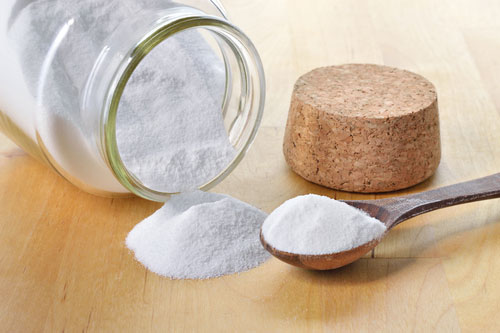
In addition to vinegar, the other key element of ecological cleaning is baking soda. Also known as NaHCO3 or sodium hydrogen carbonate, this is a fine white powder that has multiple uses. It can be found in organic stores and some supermarkets and it allows, among other things:
- To remove stains: from oil or blood on fabric by mixing baking soda with lemon.
- To do the laundry: for this, before the washing, soak the clothes with boiling water with a little baking soda.
- To deodorize: baking soda has the property of absorbing odors. Put a cup with it in the fridge so that inner smells get absorbed. Sprinkle it on a carpet and then rub it with a brush and later use the vacuum, or use it in the ashtray to avoid the smell of tobacco ashes when they’re emptied in the trash.
- To scour. Baking soda is granular, which gives it abrasive properties. By mixing it with water, we obtain a paste that allows removing the dirt by rubbing the traces of food on the hotplates or cooking pots.
- Finally, baking soda can also leave dishes shining. To do this, rub the dishes with a moistened cloth, sprinkled them with baking soda and remove the excess with a dry cloth.
4 – Give Up On Sponges And Other Disposable Wipes
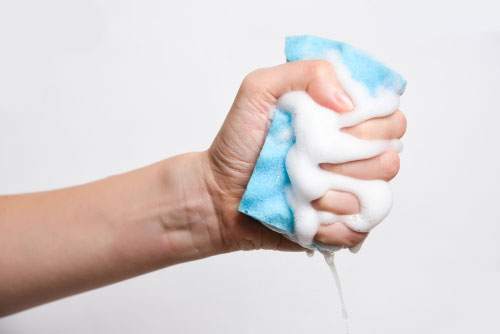
Sponges are usually used to clean kitchens or bathrooms. Yet, looking closely, they can be largely criticized. According to a German study, every cubic centimeter of a sponge contains several thousand germs, including bacteria dangerous to humans! Among them is Escherichia coli, a charming bacterium that can get lodged in the human digestive system and cause, among other symptoms, bloody diarrhea. This bacterial proliferation comes from the fact that the sponge is constantly wet, which helps bacteria develop.
In addition, sponges are either made of 1) resin foam, a petrol-derivated product, 2) a mixture of viscose from the pulp of wood and cotton, or 3) is formed by the skeleton of an organism living sailor. In addition to the sponge of animal origin, the production of sponges ends up being polluting and it must be regularly changed – resulting in regular waste production.
But what are the alternatives? You might wisely ask. There are basically two: the tawashi or the microfiber cloth. The first is a weaving of old fabrics that’s machine washable. By its turn, the microfiber cloth also has the benefit of being washable and multi-function: when it’s dry it helps to clean the dust, and when it’s wet to wash the dishes. Obviously, these two alternatives do not allow to rub some remains hanging on dirty dishes like the green side of the sponge. But for that, one gets equipped with a wooden brush whose head can be recycled.
Moreover, we can avoid dry wipes to clean the dust because using them only once means producing unnecessary waste. Old clothes can do the same job, as can microfiber fabrics.
The same goes for wet wipes: they are soaked with toxic chemicals and are intended to be used only once. And they aren’t a very cheap alternative either. They are also replaced by rags on which are poured vinegar and a few drops of essential oils.
5 – Try Homemade (Or Go For Eco-Labeled Products)
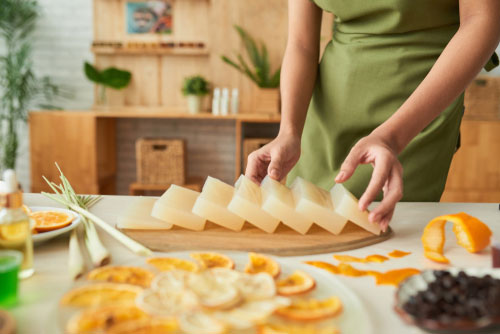
Now that you understand the magical powers of baking soda and white vinegar, you can take things to the next level: make your own cleaning products yourself.
For some products, there are some basics to follow. This requires doing some research work to understand how to prepare some “recipes” and what equipments are needed. But once you’ve done that, making your own products will not take you much longer than searching supermarket shelves for some miraculous product that will make your laundry or bathroom shine.
In addition, homemade is also economical. Sure, you’ll need to invest in a few ingredients and essential oils initially. But these are easy to keep and they’ll be used multiple times for multiple products, making such purchases worth.
In the end, the main ingredients for making your own products are:
- White vinegar
- Baking soda
- Essential oils. To begin with, two are enough: one with antiseptic and / or antifungal powers such as essential oil of tea tree or eucalyptus and another one whose smell you appreciate, such as lavender or lemongrass
- Soda crystals (anti-limescale are perfect for laundering linen)
- Soap (without glycerin or palm oil)
- Black soap, with olive oil or linseed
It should be noted, however, that for the products to be effective, it is necessary to respect certain dosages, in particular, the ones relative to the quantity of water compared to the vinegar. There are also some rules on house laundry that can be difficult to get right at first on what respects having smooth clean clothes. So before jumping into this new hobby, look for tips and advice on different sites, blogs or books.
However, if making your own products is still too ambitious, at least now that you’re aware of this reality start reading the labels of what you’re about to buy. On top of all, choose simple, natural products. Try to track their origin, see if the ingredients are not under much stock pressure and if they make sense according to your local residence. Ingredients that travel half-world to be assembled and then another thousand miles to get to a shop near you maybe not be that sustainable after all, even if they have a label branding them as green.
With these few tips, you have now an idea of what it takes to start having more responsible cleaning habits! The theory is nice, but putting it into practice is the key to contributing to a better planet.
Images credits to soda on Shutterstock, hazard on Shutterstock, bags on Shutterstock and soap on Shutterstock, vinegar on Shutterstock and sponge on Shutterstock
